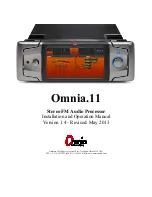
2: Functional Description
xPico® 110 Wired Device Server Integration Guide
13
Ethernet Interface
The xPico 110 wired device server module integrates an internal 10/100 Mbps Ethernet MAC and
PHY. An external magnetic module and RJ45 is required in order to connect to a standard
10/100Mbps Ethernet network.
Table 2-5 Ethernet Interface Signals for xPico 110
Signal
Name
DIR
Contact
Primary Function
Signal Layout Requirement
ETX+
Out
25
Differential Ethernet transmit data +
100 ohm differential with ETX-
ETX-
Out
26
Differential Ethernet transmit data -
100 ohm differential with ETX+
ERX+
In
33
Differential Ethernet receive data +
100 ohm differential with ERX-
ERX-
In
34
Differential Ethernet receive data -
100 ohm differential with ERX+
ETCT
28
Ethernet transmit center tap connection Route > 20 mil width
ERCT
31
Ethernet receive center tap connection
Route > 20 mil width
The table below lists several magnetic modules and combination RJ45/magnetic jacks that can
be used with the xPico 110 unit.
Table 2-6 Recommended Magnetic Modules
and Combo RJ45/Magnetic Module Connectors
Type
Manufacturer
Part Number
Magnetic only (requires RJ45)
BI-Tech
HS91-011-80LFTR
Magnetic only (requires RJ45)
Mingtek
HN0013SG
Combination RJ45/Magnetic
Belfuse
08B0-1D1T-06-F
Combination RJ45/Magnetic
Midcom
MIC2411D-0117T-LF3
Magnetic for POE
PULSE
HX2019
The Ethernet differential pair signals, ERX-/ERX+ and ETX-/ETX+ should be routed as 100-ohm
differential pairs on a layer next to the signal ground plane. The use of vias on these signals
should be minimized. The center tap signal connections between the magnetic and xPico (wired)
module are required. Center tap signals RCT and TCT should be routed with at least 20 mil trace
thickness. The area between the magnetic module and RJ45 jack, including the area under both,
should be voided of all signals and planes, except for the signals connecting to both. The signals
connecting between the RJ45 and magnetic are required to be isolated by 1500Vrms from all
other signals and planes, including chassis and signal ground. The connector shield should be
connected to chassis. It is recommended that 1206 resistor pads from chassis ground to signal
ground be placed next to each of the shield tabs. The resistor pads allow for 0 ohm jumper,
ferrite beads, or decoupling caps to be installed as needed for EMI/EMC improvement.
The Ethernet LED signals should be routed to discrete LEDs or to the LED pins on the RJ45
through 220 ohm or larger resistors. The LED signals are active low. The Ethernet LED signals
should be isolated from the signals that connect between the RJ45 and magnetic module.
Also shown in the reference schematic is a recommended TVS array that can be used to improve
ESD and EFT in harsh environments. The device shown is a Semtec RCIamp0502A. This
device features route through pin assignments allowing for the Ethernet differential signal pairs to
be routed without altering the trace impedance or adding vias. Due to this routing, the device
could be installed or depopulated as needed.














































